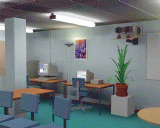
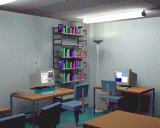
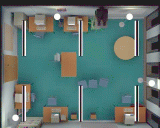
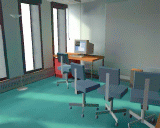
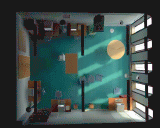
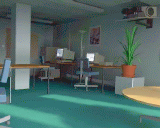
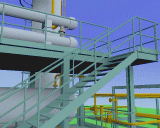
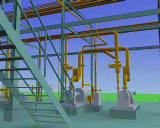
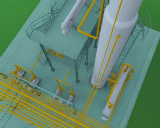
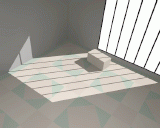
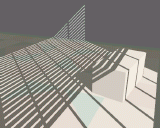
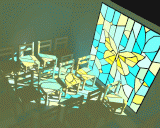

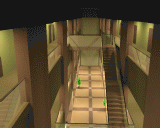
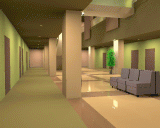
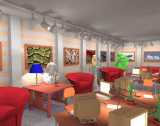
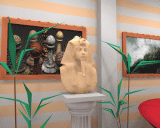

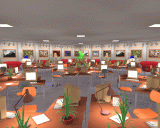
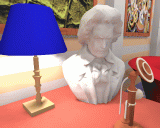
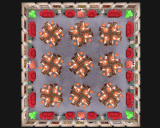
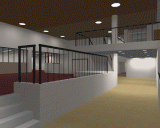
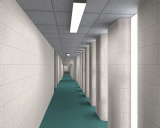
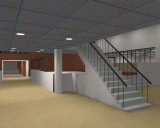
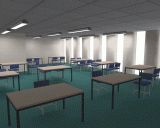
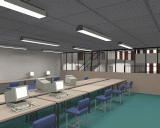
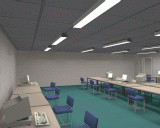
|
and may not be reproduced without permission. |
Perceptually-Driven Radiosity (1995-1998)
The following images were generated using
the VRad radiosity system, which was developed during the course of my
Ph.D. research. The radiosity solutions shown here were generated using
a perceptually-adaptive algorithm, that ensured that only features of the
radiosity solution which are visible to a human observer were computed
to any great accuracy. Those features that were not visible were only approximated
using a much faster technique. This enabled radiosity solutions to be generated
much more quickly than before.
S. Gibson, R.J. Hubbold, "A Perceptually-Driven Parallel Algorithm for
Efficient Radiosity Simulation", IEEE Transactions on Visualization
and Computer Graphics, 6(3), July-Sept 2000, pp. 220-235.
S. Gibson, "Efficient
Radiosity Simulation using Perceptual Metrics and Parallel Processing".
Ph.D. Thesis, Department of Computer Science, University of Manchester,
September 1998.
S. Gibson, R.J. Hubbold, "Perceptually-Driven Radiosity", Computer Graphics Forum, 16(2), June 1997, pp. 129-140.
  
   |
These images were generated from a model of the Advanced Interfaces Laboratory, and show both artificial and natural illumination. |
   |
The model in these images is from part of a processing plant. It is illuminated using a hemispherical skylight model. |
   |
The illumination in these images was generated using a discontinuity meshing algorithm. |
   |
These images show how ray-tracing can be used to add specular effects to a view-independent radiosity solution as a post-process. The atrium model is from the University of Aizu. |
  
   |
The model used to generate these images contains over 1.2 million polygons. Solution time was 17 hours for 2000 iterations of a progressive radiosity algorithm. |
  
   |
Finally, these are images from a radiosity solution of the University of Manchester's Computer Science Department. Portalling and light-mapping was used to allow real-time navigation through the model on a Silicon Graphics O2 or PC equipped with a 3DFx Voodoo2 graphics card. |